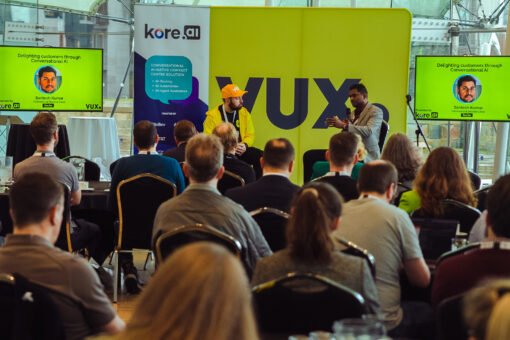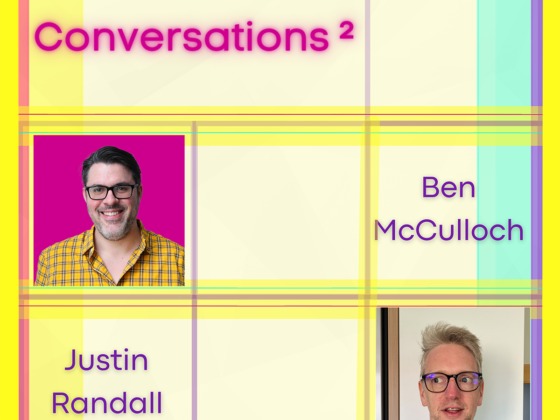When does a company in a ‘dinosaur’ industry like pharmaceuticals embrace change?
Those companies can have many live agents, answering tons of similar calls that are simple to resolve. This means that the users who have acute needs might not get prioritised quickly enough.
That was exactly the situation that faced Roche, one of the world’s largest biotech companies, that also provides diagnostics and innovations to cure diseases.
Santosh Kumar, Lead, Commercial Service at Roche Diagnostics Asia Pacific, told Kane Simms all about it during their chat at the VUX World stage at European Chatbot & Conversational AI Summit.

Santosh Kumar and Kane Simms, VUX World stage at European Chatbot & Conversational AI Summit.
The last frontier for digitalization
As Santosh explains, ‘we are like the last frontier for digitalization – we don’t like change in the healthcare domain.’
And yet Roche took their chances. During 2018 they created a program called Clinical Utopia with the aim of exploring new technologies to see if they could improve their services.
It didn’t take long for Santosh’s team to find a suitable candidate for innovation – their call centre for the APAC region (Asia-Pacific) was receiving a quarter of a million calls every year, of which 80% were simple to resolve.
Their solution was to automate those simple calls so that their live agents could help customers with more complex needs.
What do users need?
It all starts with data – that’s how you validate the use case. Santosh’s team had plenty of historical data to show what their customers needed.
Their data analysis team was put to work on the data. They looked for the repetitive patterns in the things customers wanted to do. With that information they identified the intents their bot should be able to handle.
Their was another dimension to the challenge though – the APAC region has a multitude of languages. The Roche team found that callers from China would ask the same question as those from Japan, but the nuances of language and culture meant that they would phrase their questions in vastly different ways.
From the start they knew their bot wasn’t going to deal with everything, so they ensured it was laser-focused on those customer needs that it would service.
Picking a partner
Roche had to pick a vendor to build their bot. They were at the start of their conversational AI journey, and lacked the expertise to build it themselves.
They knew this partner had to be chosen carefully. The aim of the bot was to reduce cost, so it wouldn’t make sense to employ a vendor who would absorb those savings. But more importantly, they wanted to deliver great customer experience. They wanted to ensure the customer’s needs were met well and efficiently.
Although they wouldn’t build it, they wanted to maintain the bot themselves. They didn’t want to work with complex technical systems that would require expertise – they wanted an intuitive low-code solution so that anyone on the team could train it.
Roche chose Kore AI’s Experience Optimization (XO) platform for its ease of use and user-friendly experience.
It’s already working
Roche’s bot has been live for a year now. While the upper management had concerns at first, the bot has already proven itself.
They measure its success in a few ways.
Firstly, they wanted to reduce the amount of calls being handled by live agents. They knew that the bot would take time to become accepted by users. They collected six months of data to prove the bot was successfully deflecting calls.
Secondly, they’ve reduced cost because the live agents spend less time answering simple calls. What’s even better is that callers spend less time waiting for a live agent to respond to them – they can be connected with the bot rapidly and get their answer straight away.
As with any industry, it’s all about the customers. As Santosh says, ‘Focus on the user’s point of view, not the technology point of view. So always the customers or the users will be in the centre of all your discussions.”
Watch the video to find out more about delighting customers through conversational AI with Santosh Kumar and Kane Simms.




